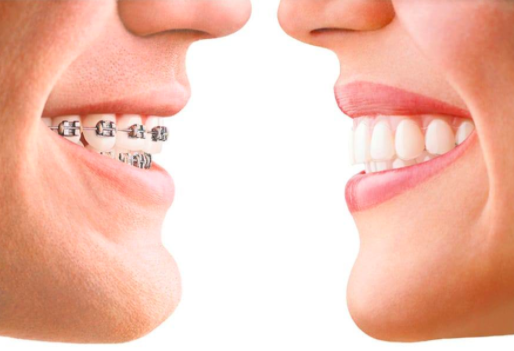Invisalign vs Braces

Are You Afraid To Go To The Dentist?
February 17, 2020
 Did you know that there’s more to straightening your teeth than a beautiful smile? Straight teeth are easier to clean and lead to reduced cavities, improve your health, and give an aligned and straight bite.
Did you know that there’s more to straightening your teeth than a beautiful smile? Straight teeth are easier to clean and lead to reduced cavities, improve your health, and give an aligned and straight bite.
There are now two preferred, popular and viable teeth straightening options in Invisalign and braces with their pros and cons. Here’s a little help in selecting the best choice for straight teeth and a beautiful smile.
Call Dr. Steven Kobayashi today at (510) 962-9530 to schedule an appointment.
Invisalign vs. Braces
Both Invisalign and traditional metal braces work to give you straight teeth and improved oral health. The main differences lie in the teeth straightening process, comfort, time, and costs.
Metal Braces
Metal braces consist of metal brackets glued to each tooth’s enamel. The orthodontist maneuvers metal wires in between the brackets to mold and shape your teeth with time.
You can have the same colored wires as the enamel, which are less noticeable or choose from multiple colors for a bit of fun. However whichever you choose, the wires are always visible.
Features
1. Irremovable
Metal braces are irremovable and stay in place, making it a better choice for those who lack discipline. It’s also better for those who worry about losing the trays or who don’t like to keep changing trays. However there are complaints of discomfort while eating.
2. Treatment Time
The treatment time is longer despite wearing the irremovable metal braces 24 hours a day, seven days a week. It usually lasts two years.
3. Cleaning
Teeth with metal braces are difficult to clean because they aren’t removable. You can just brush and floss the exposed regions, and not under the braces.
4. Follow-Up Visits
You will have to pay monthly visits to your orthodontist to see how your teeth shift, and to make adjustments. Using a positioner or retainer every night helps keep your hard work intact once your treatment is over.
5. Cost
While metal braces cost varies from one patient to another, it’s usually between $1,800 to $5,500.
Invisalign
Invisalign lets the patient straighten teeth discretely using aligner trays made of BPA-free plastic. The aligners are smooth and comfortable, and subtly but gradually move your teeth. Invisalign doesn’t use molds, but use a 3-D image of your teeth to configure the best fitting aligner trays.
Benefits
1. Removable
Aligner trays can be removed, which is its most significant benefit. It lets you eat and drink without worrying about stuck food.
2. Appearance
Most patients prefer aligners because of its clear and practically invisible trays. It’s popular amongst adults who have always wanted to straighten their teeth but had hesitated because metal braces are so noticeable.
3. Comfort
Invisalign treatment is slightly more comfortable than metal braces because there are no brackets that can make your mouth sore.
4. Treatment time
You have to wear Invisalign for about 22-24 hours a day for 6 to 18 months, depending on the case and your personal needs.
5. Costs
Invisalign costs about $5,000 per treatment and is more than metal braces. However it’s worth it considering the shorter treatment time, and added comfort.
6. Cleaning
You can clean your aligners with an Invisalign cleaning system. Or you can brush and rinse them in lukewarm water in the morning, night, and after eating or drinking anything besides water.
7. Follow Up Visits
You have to visit your dentist every two weeks to change the trays. Different trays keep your teeth moving at a gradual pace.
It’s not easy for you to choose between Invisalign vs. Braces. It’s your orthodontist who can help better you decide based on your budget, dental problems and available time.


